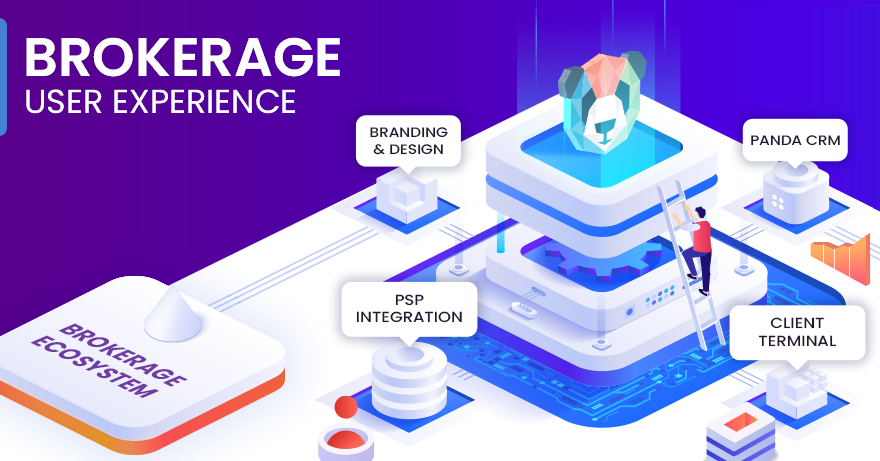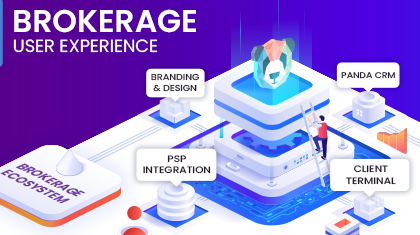
STP or Market Maker, Which Brokerage Model is Right for You?
October 13, 2021
Web-based Vs Desktop Trading Platform, Which is Better?
November 2, 2021
In software development, there’s often a trade-off between time-to-market and user experience. Developing an MVP and getting it out there before your competitors is the top priority. In the run-up to a launch, the time-consuming iterative development that all good UX design requires can take a back seat. This is just another way of saying that when launching a new product or service, client acquisition is prioritised over client retention.
What’s the problem here?
In an ideal world, you’d want to have all your UX gremlins ironed out before launch. But since that’s often not feasible, giving client experience the attention it deserves at all other times is probably the best bet. While acquisition is the be-all and end-all at the start of a product’s life cycle, client retention ultimately makes all the difference. A company that’s growing new users at twice the rate of its main competitor will be quickly overtaken if that competitor retains a higher percentage of its own customers.
What makes a product/service sticky?
This, of course, varies from industry to industry, but with online products and services, stickiness results from answering three general questions. How quickly can a potential customer get their hands on your product/service? Once they have, how easy and pleasant is to use? Finally, does your product/service encourage and incentivise certain behaviours from your users?
Let’s think specifically about online brokerage. The first question relates to how quickly and frictionlessly a client can be onboarded from providing a name and email to full KYC, deposit and trading on your platform. The second question obviously has to do with the user interface of the trading platform itself, but also the look and feel of other areas they have to interact with such as login screens and client areas. Finally, the third question relates to how all of the above encourage your traders to make you a central part of their daily routine.
The Forex Funnel
In online FX/CFD trading, the different parts of your brokerage that clients interact with all evolved separately and have been integrated over the years, in an ad hoc manner, with varying degrees of success. Lead capture/login/registration screens, client areas and trading platforms were often developed by different teams or provided by specialised third parties. This allowed the industry to solve common problems and grow rapidly in the early days but has also led to a poorly integrated brokerage ecosystem that staff are forced to work around and clients have to jump between when attempting to perform different actions.
As you can imagine, frictionless on-boarding, the quality of user experience and helping your traders build certain brand-building habits are all hard to coordinate when the underlying systems they rely on don’t play nicely with each other.
A New Trend
As a technology provider in the space, Panda covers all technological needs of the brokerage ecosystem, whether as individual off-the-shelf products or as complete turnkey “broker-in-a-box” solutions. This lends us a unique perspective on emerging trends in the space as well as problems brokers want solutions for.
By far the solution that brokers have been requesting most often in recent years is a way to integrate the core areas that prospects and clients have to interact with on a daily basis. This involves login/sign-up, client area and trading all happening in the same places. So, from the perspective of the trader, they are never switching away from one interface to another when attempting to perform actions such as: registering, logging in, getting verified, depositing, withdrawing and trading.
We believe that the reason this is such a common request is that, as the industry has evolved, brokers have naturally arrived at the same points outlined above about stickiness and competitiveness. They have identified the disconnected manner that clients are often forced to jump from one place to another as the main obstacle preventing them from being able to offer a service that keeps users glued, such as Facebook and Twitter do for social media.
Added benefits of this approach
At Panda, we have delivered several such integrations to a number of prominent brokers in the space. These integrations have all involved an all-new web-based front end for their existing trading platform (usually MT4 & MT5). It allows them to keep all the existing server infrastructure but affords them an opportunity to customise the user interface and brand it.
The solution integrates the brokerage CRM (another of our most popular products), front-facing web real estate (homepage, blog, third party analytics), and trading platform into one central interface that’s accessible from any device and any browser.
This is how you build that third key part of the stickiness equation, becoming a daily part of every client’s life, like email and social media. An integrated approach such as the above allows you to also deliver news and analysis directly through the same interface, as well as client positioning percentages and a host of other content designed to increase engagement.
Want to gamify the client journey or introduce a social component to the client’s experience? Integrating the above key systems vastly increases how carefully you can tailor each client’s experience. This can include rewards and bonuses for performing certain actions as well as public leaderboards encouraging a healthy sense of competition between your traders. The sky is the limit once you bring everything together.
Get in Touch!
If you’re interested in learning more about any of the topics raised in this article, or to book a demonstration so you can actually see some of this stuff in action, please get in touch with one of our success managers.
For free consultation
Request a Call
